By Alex Trukan
Dominating 1v1 situations has been a widely discussed topic over the last years. Many clubs have chosen to design their philosophy around this area stating that they want to consistently win ‘1v1’ situations both in attack and defence. That approach can be adapted at all levels of the game, whether it’s U6’s or 1st team football. Although widely discussed, a ‘1v1’ topic is probably not fully understood, with many practices being not realistic and not reflecting the situations in the game. That is why, it would be useful to have a look at 1v1’s from the tactical point of view, investigating how it fits into team strategy concept and how different types of it can be applied effectively.
First of all, it would be worth to consider how does a ‘1v1’ situation emerge? There are two perspectives on that – reactive and proactive. Reactive approach is when a ‘1v1’ situations emerge randomly, and the team in possession tries to exploit them only when they ‘happen’. Therefore, they happen as a by-product of other objectives that team tries to achieve (i.e. attack through the wings, play 4-3-3 formation etc.) Proactive approach is on the other hand ‘creating’ 1v1’s. That might, for example, happen through choosing specific areas and players that will try to exploit 1v1’s as well players around them that will create space by their movements off the ball.
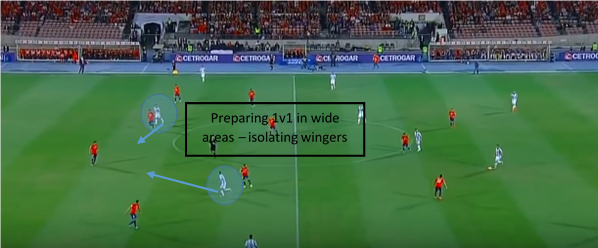
Pressure from the front
Once the team chooses ‘proactive’ approach to create 1v1 situations, it is worth to mention different types of 1v1s (according to the position of the defender) that might be created. Probably the most traditional and common type is when the attacker faces the defender. That puts an attacker into advantageous position as it gives him more vision to play forwards as well as possible options to go in various directions. Also from mechanical point of view, it is more efficient and quicker to run forwards (attacker) than backwards (defender).
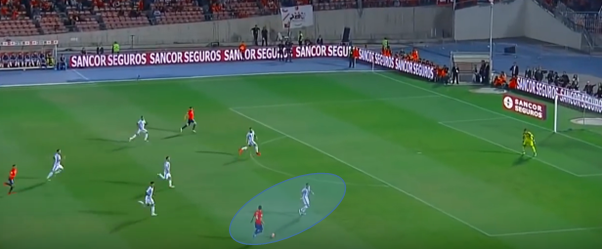
In most of the situations, facing the defender will also mean facing the opposition goal, what is a disadvantageous scenario for the defending player. In order to further unbalance the defender, it can be recommended that attacker changes direction, tempo as well as uses a variety of tricks such as ‘scissors’, ‘step overs’, ‘maradona’, ‘shoulder drop’ etc.
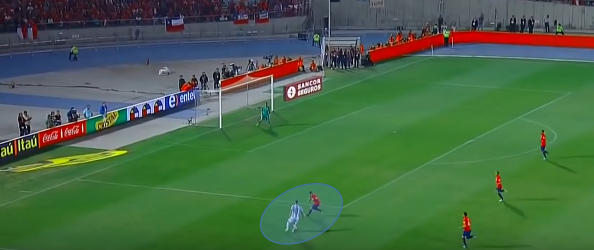
Pressure from the side
Another type of ‘1v1’ situation is when the defender pressurises the attacker from the side. This is the scenario that is probably least practiced and from my observations, a lot of the players struggle with it. In particular, it can be seen many times when attacker slows down/stops and allows the defender to face him rather than taking him on when the defender is on the side. Winning this type of a duel requires bigger touches into space forwards as well as body strength to get past the defender. Upper body disguise (fake) movement might be also helpful to ‘freeze’ the defender.
[wpsharely id="2988"][/wpsharely]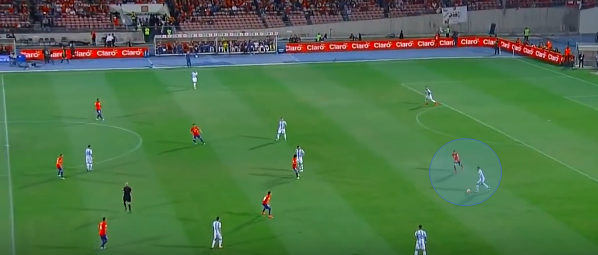
Pressure from the back
Third type of 1v1 situation is when the attacker faces away from the defender. This is relatively the most difficult situation for the attacker as his ‘free’ movement options are restricted to only going backwards or sideways. His vision also points in the direction away from the opposition goal what makes it more difficult to see options in front of the ball and play forwards.
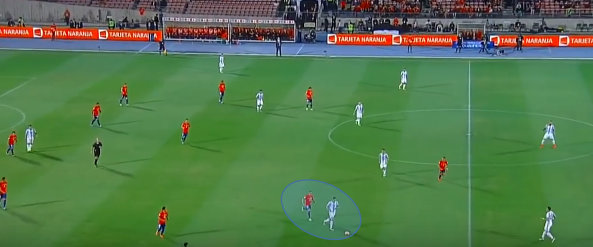
This type of situation also requires upper body disguise as well as physical qualities to change direction and turn away. It also often links to shielding and protecting the ball, requiring strength and core stability. Tricks to beat a defender are also relevant (‘scissors’, ‘step overs’, ‘shoulder drops’ etc.)
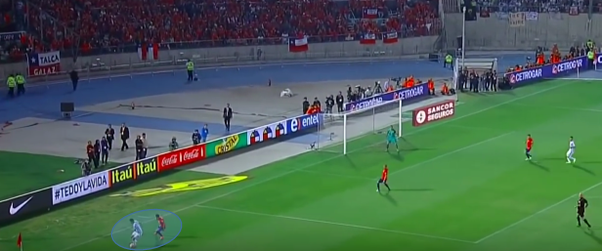
Finally, it is worth to mention that all three types of ‘1v1’ situations mentioned above happen in all areas of the pitch. That should be reflected in the practices design as well as players we coach on different positions.
Part 2 of the article will cover critical analysis and evaluation of the ‘1v1’ situation.
By Alex Trukan, Development Coach, Nottingham Forest
@AlexTrukan


